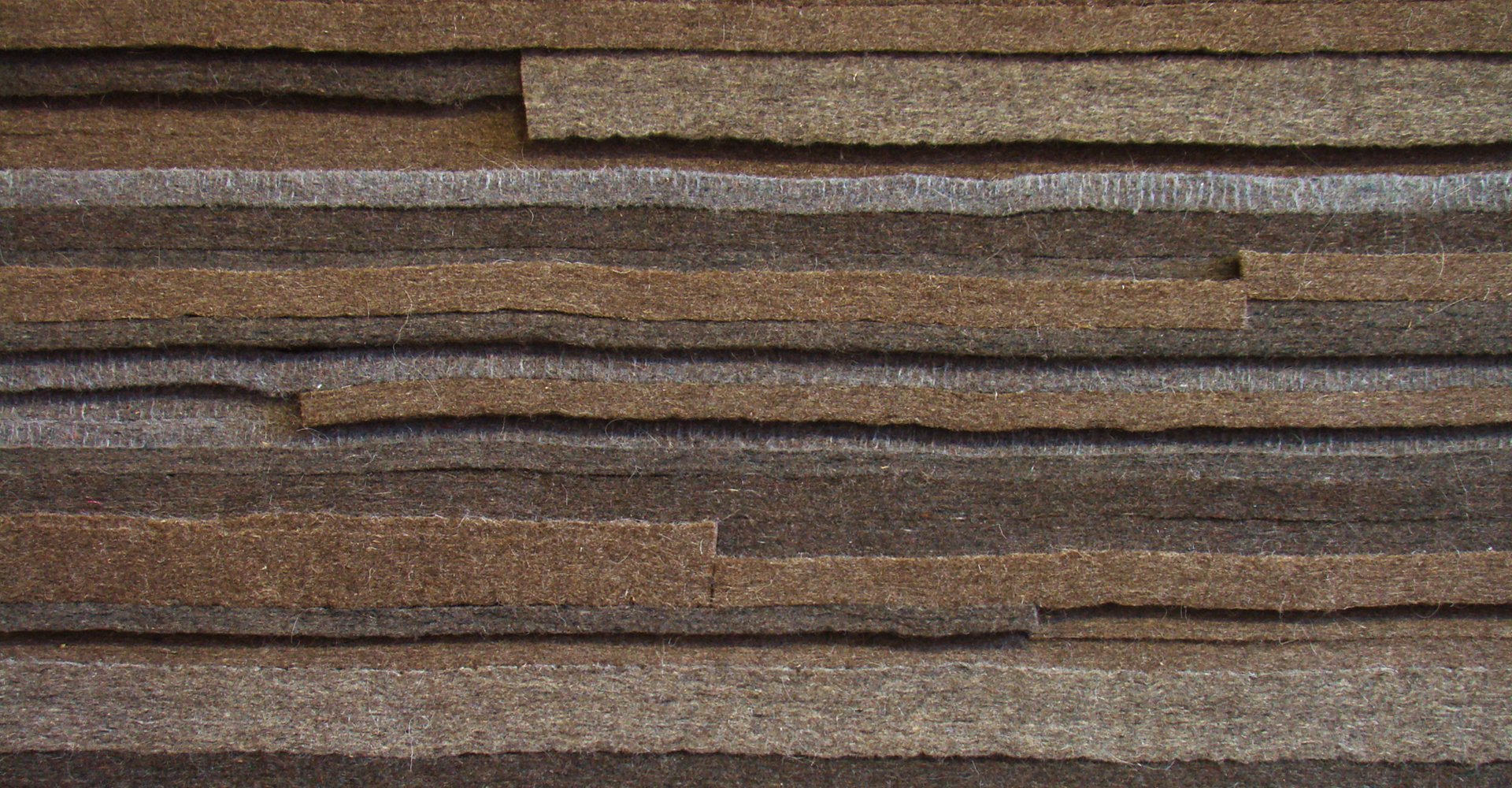FELT is a studio and label founded in 2000 by Kathryn Walter whose work helped to commercialize this industrial material, taking it from behind the scenes use in machine parts and mechanical applications to front and centre on the walls of commercial, institutional and residential spaces across North America.
Why Felt?
Made from wool, felt is an organic material that attracts an elemental sense of comfort. Though it has been handmade for centuries in parts of Asia, felt emerged as a modern material with industrialization in the nineteenth century .
FELT projects are made with manufactured felt, desirable for its unique look, as well as for its practical characteristics including tactility and structure, and ability to resist fire and absorb sound.
Not only is felt rich in aesthetic and material properties, but Walter’s interest stems from her family’s history in the felt industry.
FELT and the Environment
True felt is pressed wool. Small barbs on the surface of each wool fibre interlock and matt together in a natural process when subject to heat, friction and pressure. Made of the fleece from shearing sheep, it is environmentally friendly as a renewable resource.
Cheaper synthetic non-wovens, often called felt, have entered the market in recent years but none have the range of thickness and density, the richness of texture, and the saturation in tone of wool felt. Though it uses water in manufacturing, wool felt production is eco-friendly when compared with the toxins involved in the making and disposal of synthetics.
FELT studio emphasizes sustainability. Each project strives for maximum yield of material to reduce waste. Remnants and off-cuts are reused in various forms from limited editions to experimental installations.








